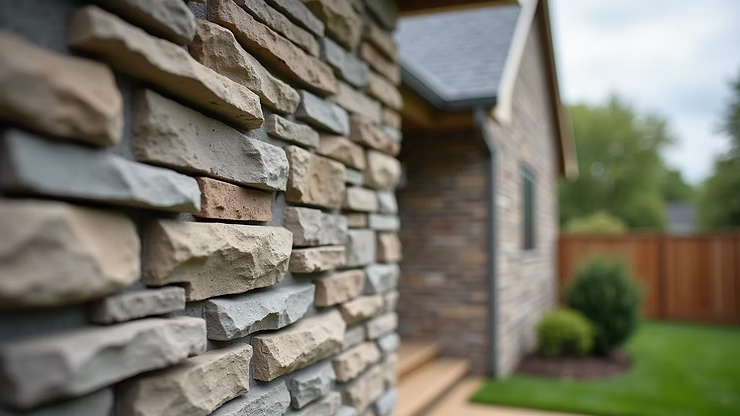Home renovations are a unique blend of excitement and challenge, especially when issues related to masonry arise. Whether you are refreshing a historic building or adding new features to your home, understanding masonry’s potential problems is essential. This post will explore common masonry challenges and offer practical design solutions that can make your renovation project successful.
Common Masonry Issues
Crumbling Mortar
Crumbling mortar is a widespread masonry issue that many homeowners encounter. Over time, the mortar that holds bricks or stones together can break down due to various factors, including harsh weather, moisture exposure, and age. According to the Brick Industry Association, mortar can lose as much as 25% of its strength within 10 years if not properly maintained. If left unattended, crumbling mortar can create gaps, leading to further structural issues.
Addressing crumbling mortar promptly is crucial. Consider hiring a professional mason for repointing, which involves removing damaged mortar and replacing it with fresh material. This not only restores the appearance of your masonry but also enhances its strength.
Cracked Bricks or Stones
Cracks in bricks or stones can occur for several reasons, including foundation settlement, temperature fluctuations, or shifting soil. In some scenarios, minor hairline cracks may not be a cause for concern; however, larger cracks can indicate serious underlying problems. A study by the American Society of Civil Engineers found that 15% of homes experience some level of cracking.
It is essential to evaluate both the extent and cause of cracks. Minor cracking might only require a sealant, while wider cracks could need more extensive repair methods, including the installation of steel reinforcement bars or even foundation repairs.
Water Damage
Water damage poses a significant threat to masonry structures. According to the Insurance Information Institute, roughly 15% of all homeowners’ insurance claims result from water damage. Poor drainage, leaking roofs, and inadequate flashing can allow moisture to penetrate walls, leading to weakened masonry and mold growth.
To prevent water damage, make sure your home has efficient drainage solutions. Regularly check and maintain your gutters and downspouts, ensuring they direct water away from the foundation. Implementing a landscape design with sloped flower beds can further help manage water flow around your home.
Design Options for Masonry Renovations
Repointing
Repointing is a vital process for maintaining the integrity of masonry structures. This technique entails removing damaged mortar and replacing it with new mortar that matches the original in color and texture. This not only enhances the visual appeal but also fortifies the structure itself.
When undertaking repointing, it’s important to ensure you use the right type of mortar to match the existing substrate. Doing so can preserve the building’s historic character while extending its lifespan.

Stone Veneers
For those looking to upgrade their home’s exterior, stone veneers can be an excellent choice. Offering the sophisticated appearance of real stone without the hefty price tag, stone veneers come in a variety of colors and styles. Approximately 60% of homeowners report increased property value after incorporating stone veneer, according to Residential Stone Institute reports.
Utilizing stone veneers not only adds elegance to your home but also contributes to its overall insulation, potentially reducing energy costs.

Adding Architectural Features
Integrating architectural features like arches, keystones, or decorative brickwork can significantly enhance both the aesthetic and functional elements of your masonry. Features like keystones not only add visual interest but also help distribute weight more effectively. This can be particularly beneficial if your masonry is already experiencing stress due to existing problems.
Choosing the Right Materials
Selecting masonry materials plays a pivotal role in the durability and visual quality of your project. Traditional bricks, natural stone, and modern concrete blocks each offer unique benefits. For instance, natural stone typically requires less maintenance and has a lifespan of over 100 years, while concrete blocks provide excellent insulation.
When choosing materials, be mindful of your local climate. For areas prone to heavy rains or extreme temperatures, different materials may perform better. Consulting a professional can guide you in selecting the best options for your specific needs.
Maintenance Tips for Masonry Structures
Regular Inspections
Conducting annual inspections is one of the most effective ways to catch masonry problems early. Look for signs of cracks, water damage, or any deterioration. Early intervention can save you significant money on repairs down the line.
Clean the Masonry
Keeping masonry clean is essential for both appearance and structural health. Regularly remove dirt, mold, and mildew to prevent water retention and damage. However, be cautious with cleaning methods; high-pressure washing can inadvertently harm the integrity of your masonry.
Final Thoughts
Masonry plays a crucial role in home design and structural stability, making it essential to address any issues during renovations. From fixing crumbling mortar to handling water damage, masonry challenges can be significant but manageable with the right strategies.
Consider various design options like repointing, stone veneers, and architectural features to enhance your home’s visual appeal while ensuring its structural integrity. Regular maintenance and proper care will further help in preventing future problems.
Whether you are planning minor updates or major renovations, understanding masonry challenges and solutions will empower you to create a beautiful and lasting home. Embrace the renovation journey and watch your dreams come to life; contact us today!

Recent Comments